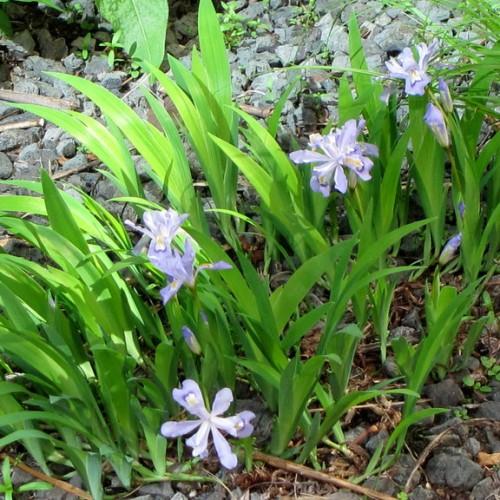
dwarf crested iris
Iris cristata 'Powder Blue Giant'
Cycle:
Herbaceous Perennial
Watering:
Average
Hardiness Zone:
3 - 9
Flowers:
Flowers
Sun:
Full sun,part shade
Leaf:
Yes
Growth Rate:
Low
Maintenance:
Moderate
Drought Tolerant:
Yes
Salt Tolerant:
Yes
Care Level:
Medium
watering
Watering Dwarf Crested Iris (Iris cristata 'Powder Blue Giant') should take place twice per week. Water thoroughly, allowing the soil to become completely saturated in the pot or flower bed. After watering, check the soil 2 to 3 inches below the soil surface for moisture. If it is still damp, it does not need to be watered. If the soil surface is dry, provide more water. In the winter, water only every 2 to 3 weeks, because the plant goes dormant and does not need much water. Do not allow the soil to dry out completely, and water deeply every 2 to 3 weeks.
sunlight
The dwarf crested iris (Iris cristata 'Powder Blue Giant') thrives best in partial sun, meaning that this plant species needs about 4-6 hours of sunlight each day. Planting the iris in a location that is exposed to too much sunlight can lead to the plant drying out and wilting. Conversely, a location that is too shaded can lead to the iris growing poorly and becoming weak. To ensure that your dwarf crested iris has enough light, it is best to provide it with morning sun and afternoon shade.
pruning
Dwarf crested iris (Iris cristata 'Powder Blue Giant') are typically best pruned in late winter or early spring, once they have fully emerged from dormancy and are again actively growing. Prune at this stage to remove any damaged, dead or overgrown leaves and stems and to shape and maintain a desired form. Pruning should only be as much as necessary to achieve desired results, and no more. If needed, a light pruning can also be done during the growing season.
